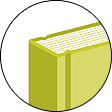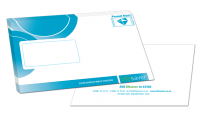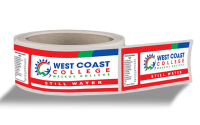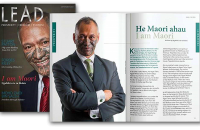Inc. Print Solutions offers a complete range of products for every business need.
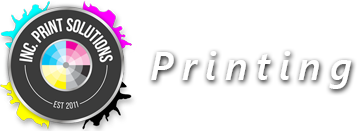
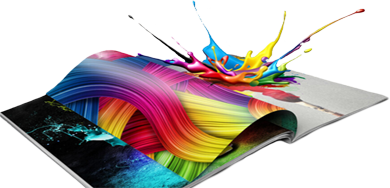
What we Offer
- Annual Reports
- Banners
- Beer Mats
- Board Games
- Books
- Brochures
- Business Cards
- Calendars
- Carrier Bags
- Catalogues
- Certificates
- Coasters
- Company Profiles
- Complimentary Slips
- Desk Pads
- Diaries
- Door Hangers
- Entry Form Boxes
- Envelopes
- Exhibition Graphics
- Flags
- Flyers
- Folders
- Forms
- Fridge Magnets
- Gazebos
- Gift Bags
- Gift Boxes
- Gift Cards
- Guides
- Infographics
- Invitations
- Labels
- Letterheads
- License Discs
- Loyalty Cards
- Magazines
- Manuals
- Maps
- Menus
- Mouse Pads
- Namebadges
- NCR Books
- Newsletters
- Newspapers
- Notepads
- Packaging
- Pamphlets
- Point Of Sale
- Postcards
- Posters
- Presentations
- Promotional Boxes
- Ribbon
- Scratch Cards
- Shelf Strips / Talkers
- Standees
- Stickers
- Table Talkers
- Tags
- Tissue Paper
- Wallpaper
- Wobblers
- Wrapping Paper
- Yearbooks
Types of Printing
Digital printing is the process of making prints straight from an electronic file. The artwork is created on a computer and directly printed onto the material.
Lithographic printing involves the creation of printing plates which are treated in such a way that, when ink is applied, the wet non-image areas repel the oil-based inks, adhering only to the images to be printed. The ink is then transferred onto a rubber blanket which is then pressed onto the paper or other substrate as it is pulled through the machine.
Large format digital printing, also called wide format printing, is a process that caters to materials too large for regular commercial printers such as large Maps, Posters, Banners, Wallpaper, Store displays, etc. The process maximizes the print roll width for each product.
Web printing is a form of offset printing used for high volume and fast paced print jobs such as Newspapers, Magazines, Books etc. It uses large rolls of paper that are fed through a printing press for a continuous run. The paper on a web press is cut into smaller parts after receiving the inked images.
Rotogravure is a type of intaglio printing process, which utilizes an engraved cylinder fixed to a rotary printing press. The cylinders transfer the print directly on to the printed objects. Gravure is utilized when the job calls for fine, detailed images in a high speed, high quality and long run printing process.
Flexography is a form of rotary printing in which ink is applied to various substrates including plastic, metallic films, cellophane and paper, by means of flexible printing plates. This printing process is commonly used to print high volumes of Labels and Packaging.
Screen printing, commonly associated with Scratch cards, Bumper stickers, Gift-wrap, Wobblers, Boxes etc. is a stencilling technique used to apply inked images to a wide variety of substrates. Using a stencil, or a series of stencils, the ink is distributed to the desired area(s) by being pressed through a porous screen.
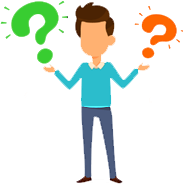
Differences Between
- Small to medium run and print-on-demand
- Quick turnaround time
- A digital file is sent directly to a printer
- Uses inks or toners in the 4 process colours, can’t do spot colours
- No separation, printing plates or a lengthy set-up. Printer software controls breakdown of CMYK
- Items can be personalised and printed with variable data
- Quality generally lower and less consistent, but technology is catching up
- Generally runs paper weights 80 – 300gsm and more limited in the types of material on which can be printed successfully
- Medium and high volume runs
- Longer turnaround time
- Process uses inks, aluminium plates and rollers. Inked plates, which has an etched image of your design on it, transfers the image to a blanket, which then transfers the image to the paper
- Prints in process or spot colours (or both)
- Artwork is seperated and a plate is made for each colour and is then mounted on the respective ink station
- Unable to print variable data
- Produces high quality consistently
- Runs a far wider range of paper weights (60 – 500gsm) and much wider choice of paper stocks
Colour Options
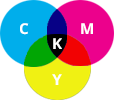 CMYK printing is commonly called Four Colour process or Full Colour Printing and is generally used for printed matter that contains multi-coloured designs and photographs.
CMYK printing is commonly called Four Colour process or Full Colour Printing and is generally used for printed matter that contains multi-coloured designs and photographs.
Process colours are created on the printing press by applying separate layers of four ink colours – Cyan, Magenta, Yellow and Black (CMYK) – in various concentrations on the paper. By layering these four colours, just about any imaginable colour can be created.
 RGB is for anything Digital or on a Screen, and CMYK and PMS (Spot) are for Print.
RGB is for anything Digital or on a Screen, and CMYK and PMS (Spot) are for Print.
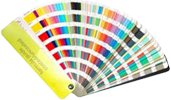 Colours created without screens or dots are referred to in the industry as Spot or Solid colours. Spot colours or PMS (Pantone Matching System) refer to a colour or ink that has been specifically mixed and calibrated to a colour matching system such as Pantone.
Colours created without screens or dots are referred to in the industry as Spot or Solid colours. Spot colours or PMS (Pantone Matching System) refer to a colour or ink that has been specifically mixed and calibrated to a colour matching system such as Pantone.
These colours are typically used in Offset printing and Screen printing, usually in large runs. If colour accuracy is essential for a particular asset such as a company Logo, Spot colours are recommended.
Size Standards

- C4 – 229mm x 324mm
- C5 – 162mm x 229mm
- C6 – 114mm x 162mm
- DL – 110mm x 220mm
Binding Methods
Saddle Stitch
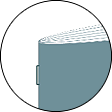
Perfect Binding

Spiral & Wiro Bind
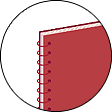
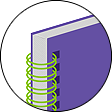
Case Bound
